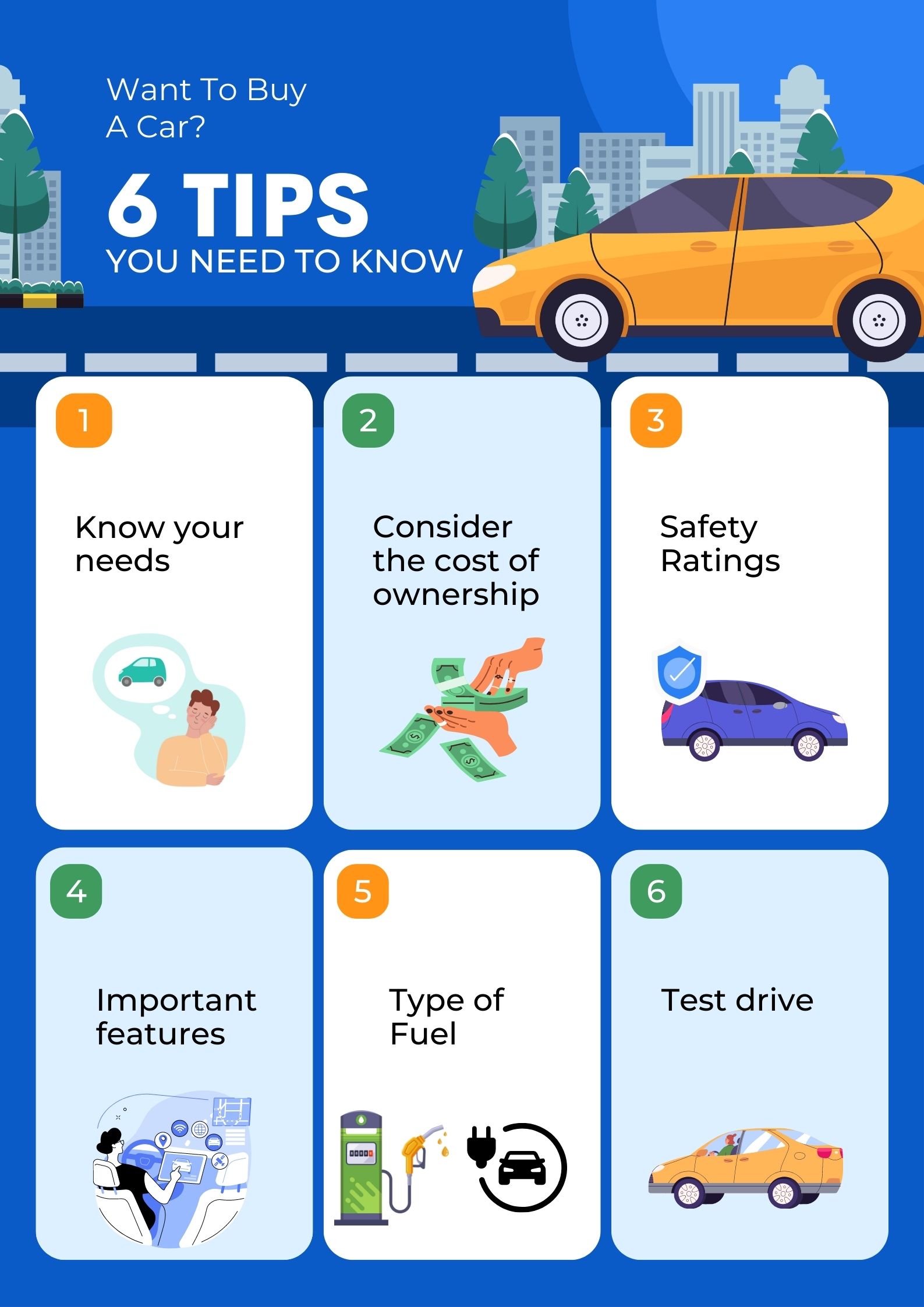How to Choose a Perfect Car
Choosing the best car for you can seem overwhelming, but it doesn’t have to be. By determining your needs and priorities, researching different makes and models, considering the cost of ownership, and taking cars for a test drive, you can find a car that meets your needs and fits your budget. In this blog post, we’ll guide you through the process of choosing the best car for you. Here are some of the things to look after before buying the perfect car for yourself.
1. Know your needs, priorities, and budget
Do you need a car for commuting, family transportation, or for weekend adventures?
Do you need it for rallies and competitions?
How many passengers do you need to accommodate?
To choose the type of fuel, know about your average daily miles.
Now that you have chosen your requirements, proceed toward the next checkpoint of safety ratings.
2. Consider the cost of ownership
You should always consider factors such as operating expenses- These are the expenses that you incur to keep the car running. For example, for a car, these may include fuel, insurance, registration fees, etc, and annual maintenance costs- These are the expenses that you incur to repair or upgrade the product or asset. These may include parts, labor, software updates, etc while thinking of buying a car. Whether these factors matter to you or not, you should have prior knowledge before deciding to buy a car.
3. Look for good safety ratings and reliability
Always keep the safety features as one of the priorities while buying a car. As per the government of India, car manufacturers must provide 6 airbags even in the base models. Do know about the ground clearance and aerodynamics of the car? This helps you to achieve performance in your car. There are different ways to look for cars with good safety points. One way is to check the Global NCAP rating of the car, which is a measure of how well it protects the occupants in a crash test1. Another way is to check the IIHS TOP SAFETY PICKS of the car, which is a list of vehicles that meet high standards for crashworthiness and crash avoidance.
4. Know all the important features and specifications
It’s also essential to think about the features that are important to you. Do you want a car with advanced safety features like lane departure warnings or blind spot monitoring? These include airbags, anti-lock brakes, blind-spot alerts, emergency braking systems, etc. Safety features are important to protect you and your passengers in case of an accident or collision. Do you want a base-heavy speaker in your car? should your car have a sunroof?
Do you need a vehicle with a lot of cargo space or towing capacity?
Engine features are the speed, performance, and fuel efficiency of your car. You can choose between manual, automatic, or semi-automatic transmission, depending on your driving style and comfort.
Navigation features like GPS system, camera, speakers, touchscreen display, etc. These features can enhance your driving experience and convenience. You can also look for features like charging points, head-up displays, 360-degree views, etc.
Make a list of must-have features and use it to narrow down your options.
5. Select the type of fuel that is environmentally friendly
How much do you drive? If you drive a lot, especially on highways or long distances, you may want to choose a fuel type that gives you more mileage and lower running costs. Diesel and electric cars may be suitable for you in this case. However, if you drive less, especially in city traffic or short distances, you may want to choose a fuel type that gives you better performance and lower maintenance costs. Petrol and hybrid cars may be suitable for you in this case.
What is your budget? If you have a high budget, you may want to choose a fuel type that gives you more features, comfort, and convenience. Electric and hybrid cars may be suitable for you in this case. However, if you have a low budget, you may want to choose a fuel type that gives you more affordability and reliability.
What is your environmental concern? If you are concerned about the environment and want to reduce your carbon footprint and emissions, you may want to choose a fuel type that gives you more eco-friendliness and sustainability. Electric and hybrid cars may be suitable for you in this case.
Moving forward, Once you have a shortlist of cars that meet your needs and budget, it’s time!!
6. Shortlist your final 3 cars for the test drive
You should test drive the car that you are interested in buying, to see how it feels on the road, how it handles different terrains and traffic conditions, how comfortable and spacious it is inside, and how easy it is to operate and control its features and functions.
Lastly, Ask questions: Don’t be afraid to ask the salesperson questions or take your time deciding.
CONCLUSION
choosing the best car for you involves determining your needs and priorities, researching different makes and models, considering the cost of ownership and features that are important to you, and taking cars for a test drive. By following these steps, you can find a car that meets your needs and fits your budget.

What is the most essential feature in a car according to you?
